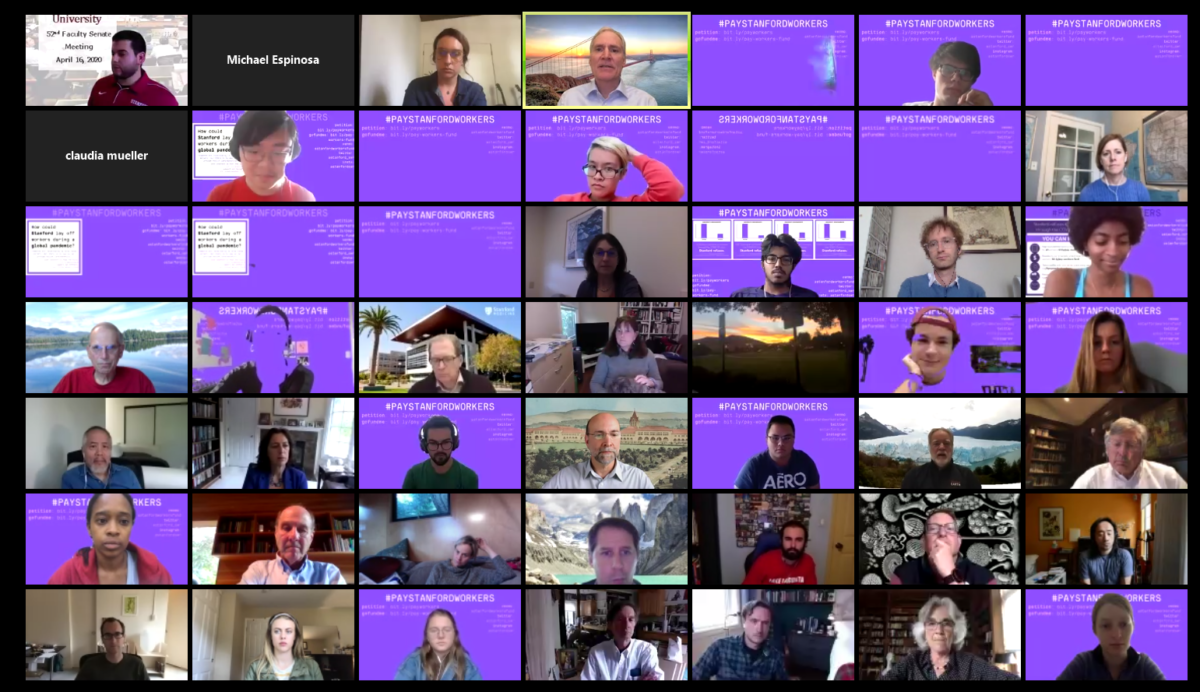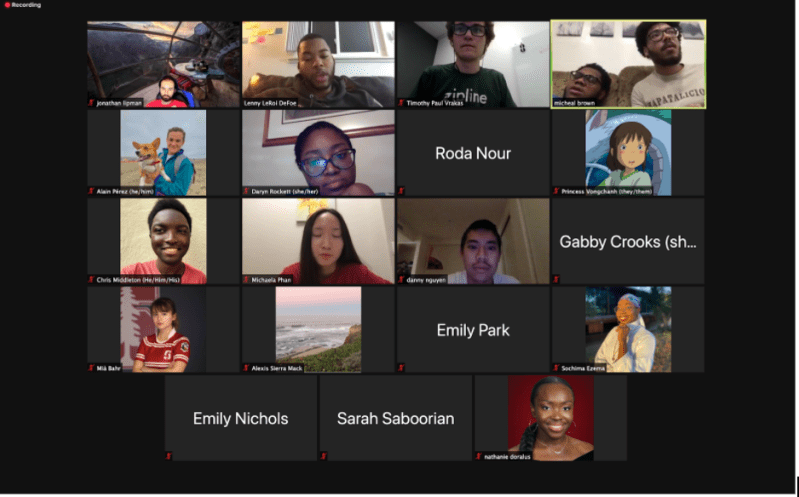Undergraduate senators expressed concerns over the Faculty Senate’s recent decision to switch to a webinar format at their Thursday meeting. Senate Chair Micheal Brown ’22 called the decision “disgusting,” saying “it undermines any kind of rhetoric they give about caring about the student voice.”
According to Brown, the Faculty Senate cited technical concerns for their decision to eliminate student attendance at Faculty Senate meetings. Now, students can only view meetings in Zoom’s webinar mode, which does not give participants the option of having their video shown on the screen to other meeting participants. The Faculty Senate Steering Committee wrote that the Senate decided to move away from “the open zoom meeting structure” moving to “the current zoom/livestream structure” to mimic in-person meetings in a statement to The Daily.
“Maintaining the deliberative capacity of the Senate is already a challenge on zoom but is made even more difficult by videos from hundreds of non-senators,” they wrote. “A key role of the Senate meetings is to encourage faculty discussion via the creation of a senate community and this format facilitates that goal. Student representation on the Faculty Senate is via the ASSU representatives, who have the right to speak and are included in the zoom meeting alongside the other Senators.”
In the past, student activists have created and used custom Zoom backgrounds to stage peaceful protests in the meetings. During spring quarter, Stanford Students for Workers’ Rights (SWR) coordinated one such protest in a Faculty Senate meeting, using purple backgrounds to endorse the continuation of pay for the University’s subcontracted workers at the beginning of the COVID-19 pandemic.

“They have really robust discussions about things which we’ve seen, obviously, have so many implications for us and our personal lives,” said Brown. “It is … especially alarming that when [the Faculty Senate] saw student activism, [there was] an effort to suppress it.”
Brown said he has personally attended Senate meetings to protest. He described sometimes hundreds of students showing up to Zoom meetings, all using a coordinated virtual background.
He called the Senate’s cited supposed technical difficulties “nonsense” and said they didn’t adequately justify their change in procedure. Undergraduate Senator Alexis Mack ’22 brought up that the move could be temporary and suggested that it was initially raised in part because members of the Senate said they wanted to be able to vote more efficiently.
But Brown countered this idea, calling the reason “bulls**t,” and Mack agreed. Brown later joked about the change, saying of the members of the Faculty Senate, “y’all founded Google but y’all don’t know how to use a Google Form?”
Assistant Academic Secretary Adrienne Emory wrote that students interested in “observing Senate meetings, obtaining Senate records, or joining the Senate agenda mailing list” could email her in a statement to The Daily. When asked if students who had previously used coordinated Zoom backgrounds to protest meetings would be able to sit in on meetings in the new format, Emory wrote that only people with the right to speak at meetings and invited guests would be allowed to attend, in accordance with Senate Rules, IV, 3. Emory suggested that these students would only be able to watch the meetings via a live stream.
Brown did not immediately respond to The Daily’s request for comment on the Steering Committee’s response.
Mack later clarified her stance, saying she thought it was reasonable for students to want to access the meetings directly.
“I think that there’s a large concern that the physical structure of the Faculty Senate would most represent the virtual structure, and I think that any attempt to do that would be to attempt to include the students as much as possible,” she said.
Undergraduate Senate Parliamentarian Mià Bahr ’22 said that the current situation could allow the Senate to take actions “without students knowing,” characterizing as “scary” her impression that measures were being taken to “reduce transparency across the board” for “no reason.”
Bahr said that the Undergraduate Senate was able to vote and maintain all records through Zoom, adding that “Stanford faculty should be held to the same standard that us, as 20-year-olds are being held to.”
Assistant Director for the Office of Student Engagement Aaron Grayson, who attended the Undergraduate Senate meeting, offered to take the concerns the senators had raised back to “professional staff” to help them “pack in a little bit more administrative punch.”
The Undergraduate Senate also unanimously approved a joint resolution to implement voluntary naloxone training available to all community associates, resident assistants and Stanford affiliates. Naloxone, known colloquially as Narcan, can be used to save a person’s life if they have overdosed on an opioid. The Graduate Student Council passed the resolution on Wednesday.
The Senate unanimously approved the appointment of Sherwin Lai ’24 to the Constitutional Council. Lai was also confirmed by the Graduate Student Council.
This article has been updated with responses from the Faculty Senate Steering Committee and Adrienne Emory, Assistant Academic Secretary.
Contact Sam Catania at samcat ‘at’ stanford.edu.
